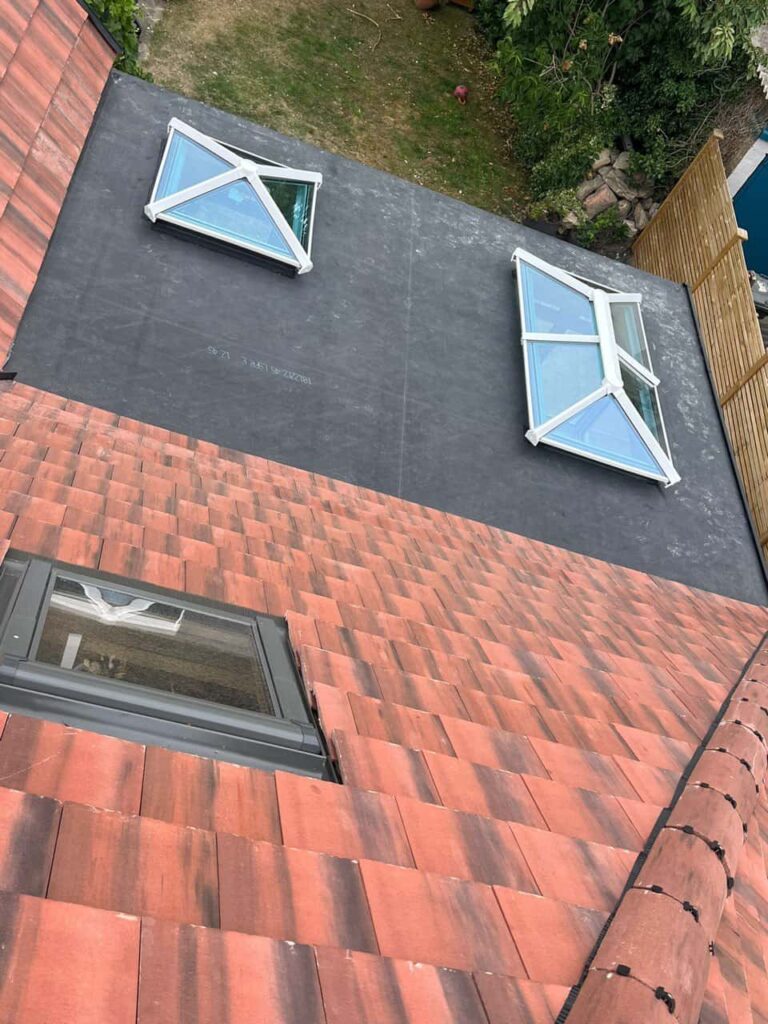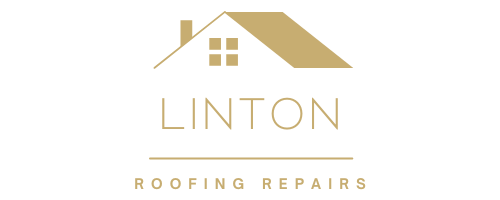When most homeowners think about roof tile slippage, they tend to focus on obvious problems like water ingress or visible roof damage. However, one of the less-discussed but equally important consequences of slipped tiles is their impact on a property’s energy efficiency. A roof that’s no longer tightly sealed can lead to unnecessary heat loss, drafts, and rising energy bills — all of which can easily be avoided with timely maintenance. At Linton Roofing Repairs in Linton, Cambridgeshire, we regularly help homeowners restore their roofs to full efficiency by addressing issues such as tile displacement and structural wear.
Understanding Roof Tile Slippage
Roof tile slippage occurs when individual tiles move out of position, often due to age, weather exposure, or failing fixings. Over time, nails or mortar that once secured the tiles can deteriorate, leaving gaps that disrupt the roof’s uniform surface.
In some cases, high winds or frost can loosen tiles further, causing them to slide downwards or lift slightly away from the roof’s underlay. While the problem may start small, even minor displacement can compromise the insulation and weatherproofing properties of the roof.
How a Slipped Tile Affects Heat Retention
Your roof plays a key role in maintaining the thermal performance of your home. When roof tiles are properly aligned, they create a continuous barrier that keeps warm air inside and cold air out. Slipped tiles, however, allow air to move freely beneath the roofing layer, breaking that barrier and reducing overall efficiency.
Here’s how this process unfolds:
- Heat escapes more easily: Gaps caused by loose or missing tiles allow warm air from the living space to escape through the roof structure.
- Cold air enters the loft: Outdoor air can infiltrate the roof space, lowering indoor temperatures and forcing heating systems to work harder.
- Moisture accumulation: Gaps in the roofing system can also let in moisture, which can dampen insulation and reduce its thermal performance even further.
Over time, these effects compound, leading to a less comfortable home and higher energy consumption.
The Link Between Air Leakage and Energy Costs
Air leakage through the roof is one of the most common yet overlooked causes of reduced energy efficiency. When heat continually escapes, the property loses its ability to regulate temperature naturally. The heating system compensates by running for longer periods, using more energy to maintain a comfortable indoor climate.
At Linton Roofing Repairs, we often find that fixing slipped or damaged tiles provides immediate benefits. Once the roof is properly sealed again, homeowners notice improved warmth retention and reduced energy usage, particularly during colder months.
The Role of Insulation and Ventilation
It’s not just the roof tiles themselves that influence efficiency — insulation and ventilation are also key factors. A well-insulated loft relies on the roofing layer above to protect it from moisture and drafts. When tiles are displaced, damp air can enter, reducing the insulation’s effectiveness.
On the other hand, correct ventilation ensures that excess moisture can escape. However, this balance is disrupted when roof coverings shift, either restricting airflow or introducing unwanted openings that cause excessive heat loss.
At Linton Roofing Repairs, we ensure that every repair maintains the right balance between insulation and ventilation, keeping your roof efficient and structurally sound.
Signs That Roof Tile Slippage Is Affecting Your Energy Efficiency
Homeowners may not always notice slipped tiles immediately, but there are telltale signs that indicate the issue is impacting your property’s energy performance:
- Unexplained temperature drops: Certain rooms or upper floors may feel colder, even when heating is on.
- Increased heating costs: A steady rise in energy bills often points to hidden inefficiencies in the roof structure.
- Visible gaps or uneven roof lines: Misaligned tiles are a clear sign of movement and potential energy loss.
- Condensation in the loft: When warm air meets cold air entering through gaps, condensation can form on rafters and insulation.
- Damp patches or mould growth: This can indicate moisture ingress through displaced tiles, which further reduces insulation quality.
Addressing these problems early not only restores warmth and comfort but also prevents secondary damage from developing.
How Professional Roof Repairs Restore Efficiency
Fixing slipped roof tiles is a relatively straightforward process for experienced roofers, but it requires attention to detail to ensure long-term effectiveness. The team at Linton Roofing Repairs in Linton, Cambridgeshire, follows a thorough approach to guarantee lasting results.
Step 1: Roof Assessment
We begin by inspecting the entire roof to identify slipped tiles and assess the condition of the underlying battens and fixings.
Step 2: Realignment and Replacement
Slipped tiles are carefully repositioned or replaced if damaged. Our team ensures that each tile is securely fixed and aligned to maintain full coverage.
Step 3: Checking Underlays and Flashing
We inspect the underlay and flashing to ensure no moisture is entering through hidden openings. These components play a major role in preventing air leaks and water damage.
Step 4: Securing Ridge and Verge Tiles
Tiles along ridges and edges are especially prone to movement. Reinforcing these areas ensures long-term protection against wind uplift and further displacement.
Step 5: Final Weatherproofing
Once all repairs are complete, the roof is inspected for overall uniformity and sealing to ensure maximum energy efficiency and performance.
Preventing Future Slippage
While no roof is entirely immune to wear and weathering, homeowners can take steps to reduce the likelihood of future slippage. Regular inspections, especially after heavy storms or strong winds, help identify early signs of movement before they worsen.
Keeping gutters clear and ensuring adequate roof ventilation also helps maintain structural integrity and prevents moisture damage that weakens tile fixings over time.
For older roofs, periodic maintenance by professionals such as Linton Roofing Repairs can extend lifespan and efficiency, keeping your property protected and comfortable year-round.
Why Choose Linton Roofing Repairs
Linton Roofing Repairs in Linton, Cambridgeshire, provides professional roofing solutions focused on both structural integrity and energy performance. Our experienced team understands how even small issues like tile slippage can have wider effects on your home’s comfort and efficiency.
We use proven repair techniques and high-quality materials to restore your roof’s full functionality, ensuring that your property remains warm, secure, and energy-efficient for years to come.
Conclusion
Roof tile slippage might seem like a minor issue, but its impact on energy efficiency can be significant. Gaps in the roofing surface allow heat to escape, cold air to enter, and moisture to damage insulation — all of which increase energy consumption. Regular maintenance and timely repairs are the best way to avoid these problems. For expert help restoring your roof’s condition and efficiency, homeowners can rely on Linton Roofing Repairs in Linton, Cambridgeshire, to deliver professional and lasting results.
Call us on: 01223 655 294
Click here to find out more about Linton Roofing Repairs
Click here to complete our contact form and see how we can help with your roofing needs.

